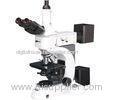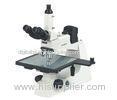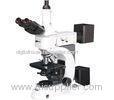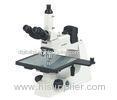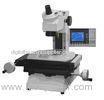|
DongGuan Sinowon Precision Instrument Co., Ltd.
|
Gold Index: 7348
Motorized Probe Ultrasonic Digital Hardness Tester Test Hardness for Steel
| Place of Origin: | Zhejiang, China (Mainland) |
|
|
|
| Add to My Favorites | |
| HiSupplier Escrow |
Product Detail
High Measurement Accuracy — ±3% HV, ±1.5HR,
SU-300 Application Range:

Ultrasonic Hardness Testing apply UCI method: Ultrasonic Contact Impedance, a hardness testing method developed by Dr. Claus Kleesattel in 1961 based on the measurement of the frequency shift of a resonating rod caused by the essentially elastic nature of the finite area of contact between the indenter and the test piece during the penetration, the execute standard is ASTM A1038.
In conventional workbench hardness testing like Brinell or Vickers testing according to Test Methods E 10,E 92, and E 384, the hardness value is determined optically by the size of the indentation in the material generated by a certain test load, after the indenter has been removed.
In the mobile hardness test under applied load according to the UCI method, however, the size of the produced indents are not determined optically. Instead the contact area is derived from the electronically measured shift of an ultrasonic resonance frequency.
When selecting a hardness tester for your application, it is important for you to consider the following:
A, Choose the correct test method based on the application.
Plan to use the highest test force and largest indenter possible. Consider the effects of the shape and dimensions of your test sample.
B, Verify the test results meet your requirements for accuracy and repeatability. There are significant differences between levels of performance within each classification of tester. A difficult job on one tester could be very simple and fast on another.
Answer these key questions:
1, What kind of hardness scale to be used?
2, What is the material to be tested, and is this material suitable to the type of test method you are considering?
3, How large is the part, component or specimen to be tested?
4, Is the test point difficult to reach?
5, What is the quantity of testing that will be done?
6, How accurate does your test result need to be?
7, What is your budget?
8, What is the required return on investment and do you have ways to measure reductions in costs- yields, throughput, operator efficiency?
9, What testing problems have you experienced in your current method?
10, How knowledgeable are the users of the tester?
| SU-300 Specifications: | ||||
| Product Name | Ultrasonic Hardness Tester | |||
| Model | SU-300 | |||
| Code# | 882-141 | |||
| Loading Force | Motorized Probe 1Kgf | |||
| Measuring Rang | HV:80- 15 99; HRC:20-70; HB:76-618 | |||
| Measuring Accuracy | HV:±3%HV; HRC:±1.5HRC; HB:±3%HB | |||
| Indenter | 136°Vickers Diamond Indenter | |||
| Measuring Direction | Support 360° | |||
| Data Storage | To save 1000-group of measuring data and 20-group of calibration data | |||
| Hardness Scale | HV, HB, HRC, HRA, HRB | |||
| Data display | Loading force, testing-times, Testing result, Average, Maximum,Minimum, deviation and conversion scale. | |||
| Hardness indication | LCD display | |||
| Operating Environment | Temperature:-10deg~50deg; Humidity: 30%~80%R.H | |||
| Operating Voltage | DC 6V | |||
| Instrument Dimensions | 160x80x31mm | |||
| Net Weight | Approximately 500g(Without probe) | |||
| Standard Delivery: | ||||
| Standard Delivery | Code# | Standard Delivery | Code# | |
| Instrument Main Body | 882-121 | USB Cable | 882-851 | |
| 1Kgf Motorized Probe | ||||










